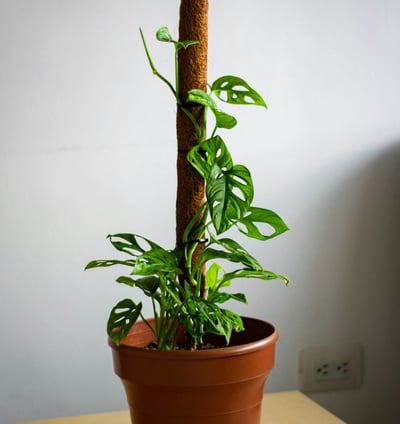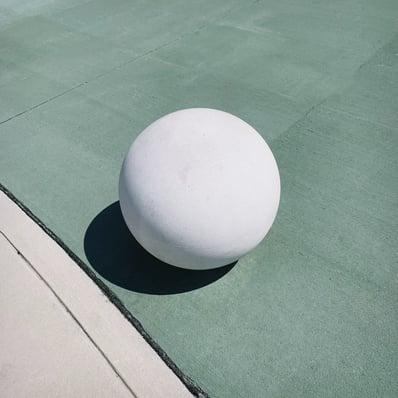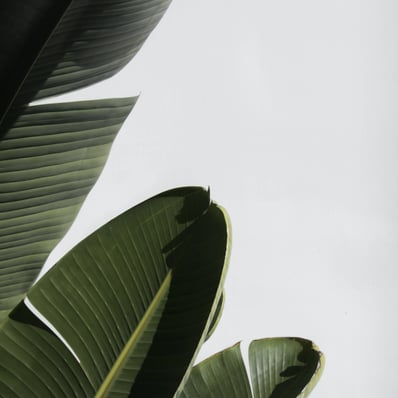Explore the World of Monsters
Monstera Deliciosa






Fun Fact: This plant can produce fruit!
Monstera Adansonii
Fun Fact: Also known as the Swiss Cheese Plant!
Monstera Thai Constellation
Fun Fact: It is a hybrid of the Monstera deliciosa and the Epipremnum pinnatum!
Monstera plants are a popular choice for indoor gardens due to their striking appearance and relatively easy care requirements. To achieve optimal growth indoors, it's crucial to provide the right balance of light, moisture, and nutrients. Understanding the specific needs of your monstera will enhance its beauty and vitality.
You can create an ideal environment by placing your monstera in bright, indirect light and ensuring the soil remains consistently moist yet well-drained. Regularly feeding your plant during the growing season will also promote healthy foliage and encourage growth.
With proper attention to these care guidelines, your monstera can thrive and become a stunning focal point in your home. By adopting a few simple practices, you can enjoy a vibrant plant that brings life to any space.
Understanding Monstera
Monstera plants, known for their unique foliage, thrive in specific environmental conditions. To ensure optimal growth, it is crucial to grasp their species characteristics and the ideal conditions they need.
Species Overview
Monstera, particularly Monstera deliciosa, is native to tropical rainforests in Central America. This species is known for its large, split leaves that can grow impressively, sometimes reaching up to three feet in length.
The leaves develop holes and splits as they mature, which allow the plant to withstand strong winds and absorb more light. As a member of the Araceae family, Monstera is a climbing plant, often using trees for support in its natural habitat.
You can expect flowering under the right conditions, producing a fruit that resembles a cob of corn. Nevertheless, these plants generally remain popular for their foliage rather than their infrequent blooms.
Optimal Conditions for Growth
To thrive indoors, Monstera requires well-draining soil, ideally a mix of potting soil and perlite. This medium supports proper drainage while retaining some moisture.
Light: Bright, indirect light is best, as direct sunlight may scorch the leaves.
Watering: Water when the top inch of soil feels dry. Overwatering can lead to root rot. If you have really chunky aerated soil, you can water once a week.
Humidity: Aim for humidity levels above 40%. You can increase humidity by misting the leaves or placing a humidity tray nearby.
Temperature: Maintain temperatures between 65°F and 85°F (18°C to 29°C). Avoid drafty areas or sudden temperature changes.
Following these guidelines will help you create the ideal environment for your Monstera to flourish.
Planting and Repotting
Proper planting and repotting are crucial for your Monstera's health and growth. Selecting the right soil, choosing an appropriate pot, and understanding the repotting process will help ensure your plant thrives indoors.
Choosing the Right Soil
Monstera plants prefer well-draining soil that retains some moisture but doesn’t stay soggy. A mix of potting soil, perlite, and orchid bark works well.
Potting Soil: Provides nutrients and structure.
Perlite: Improves drainage and aeration.
Orchid Bark: Adds texture and assists with moisture retention.
You can also choose a pre-formulated tropical plant soil. Ensure that your soil mix encourages root health, as poor drainage can lead to root rot.
Pot Selection
Select a pot that allows for drainage, which is vital for your Monstera's water management. Opt for a container made from materials like terracotta or ceramic, as they allow moisture to evaporate.
Size: Choose a pot that is one size larger than the current one. A pot that is too large may retain excess moisture, which can harm the roots.
Drainage Holes: Ensure there are sufficient holes at the bottom to allow excess water to escape. This reduces the risk of root rot.
Consider decorative pots with inner liners if aesthetics are important, but always prioritize drainage.
Repotting Steps
Repotting should be done every 1-2 years or when the roots outgrow the pot. Follow these steps for successful repotting:
Preparation: Gather your new pot and soil mix.
Remove the Plant: Gently take the Monstera out of its current pot, loosening the roots if necessary.
Inspect Roots: Check for any signs of rot or damage; trim unhealthy roots with sterilized scissors.
Planting: Place the root ball in the center of the new pot and fill with soil, ensuring the plant is at the same depth as before.
Water Thoroughly: After planting, give it a thorough watering to help settle the soil.
Regularly monitor your Monstera for signs of stress post-repotting, like drooping leaves, which may indicate over- or underwatering.
Watering Requirements
Proper watering is essential for the health of your monstera. Understanding how frequently and how much to water, as well as recognizing the signs of both overwatering and underwatering, will help you maintain your plant's optimal growth.
Frequency and Amount
Water your monstera when the top 1-2 inches of soil feel dry to the touch. Typically, this translates to watering every 1-2 weeks. Factors such as humidity, temperature, and pot size affect how quickly the soil dries.
When watering, ensure that you provide enough water so that it flows from the drainage holes at the bottom of the pot. This ensures thorough moisture distribution. Avoid letting the plant sit in standing water, as this can lead to root rot.
Signs of Overwatering
Overwatering your monstera can be detrimental. Look for yellowing leaves or a wilting appearance, as these can signify root issues. The soil may feel soggy or retain too much moisture.
A musty smell from the soil indicates possible root rot. To address overwatering, allow the plant's soil to dry out entirely before you water again. You might consider repotting into fresh soil if the problem persists.
Signs of Underwatering
Underwatering can stunt your monstera's growth. Droopy leaves or brown edges should prompt you to check the moisture level of the soil. If the soil feels very dry or pulls away from the edges of the pot, it's time to water.
You may notice the plant's leaves curling or becoming crispy, which signifies stress. To remedy this, water the monstera thoroughly and maintain a consistent watering schedule to prevent future issues.
Light and Temperature
Providing the right light and temperature for your Monstera is crucial for its health and growth. These factors directly influence their ability to photosynthesize and thrive indoors.
Ideal Light Conditions
Monstera plants prefer bright, indirect light. Direct sunlight can scorch their leaves, leading to browning and damage. Aim for a location where the plant receives filtered light, such as near a north or east-facing window.
You can also use sheer curtains to diffuse harsh sunlight. If natural light is limited, consider using grow lights for 10-12 hours daily. Monitor your plant's response: if it becomes leggy or pale, it may need more light.
An ideal light intensity measured at 200-800 foot-candles encourages robust growth and healthy leaf development. Always adjust the light exposure gradually to prevent shock.
Temperature Ranges
Monstera thrives in temperatures between 65°F and 85°F (18°C and 29°C). Protect your plant from extreme heat or cold, as temperatures below 60°F (16°C) can hinder growth.
Avoid placing your Monstera near drafty windows, heating vents, or air conditioning units. Sudden temperature shifts can stress the plant, leading to yellowing leaves or slow growth.
In winter months, maintain a consistent indoor temperature. Monitoring humidity levels is also essential, as Monstera enjoys humidity levels around 40-60%. You can increase humidity through misting or placing a humidifier nearby.
Nutrition and Fertilization
Providing proper nutrition is crucial for the healthy growth of your Monstera. Understanding the types of fertilizer and establishing a fertilizing schedule will help optimize plant health and growth.
Fertilizer Types and Ratios
When choosing fertilizer, opt for a balanced, water-soluble plant food with an N-P-K ratio of 20-20-20 or 10-10-10. These ratios provide essential nutrients: nitrogen (N) promotes leafy growth, phosphorus (P) supports root development, and potassium (K) enhances overall plant health.
You can also use organic alternatives, such as fish emulsion or compost tea. These options release nutrients slowly and improve soil health. Apply fertilizers diluted to half the recommended strength to avoid burning the roots.
Consider using fertilizers specifically designed for indoor plants, as they often contain micronutrients that support leaf health. Regularly check your Monstera for signs of nutrient deficiencies, such as yellowing leaves or stunted growth.
Fertilizing Schedule
During the growing season, typically spring and summer, fertilize your Monstera every 4-6 weeks. Frequent feeding helps meet the increased nutrient demands as your plant actively grows.
In fall and winter, reduce fertilization frequency, applying every 2-3 months, as the plant enters a dormant phase. Always water your Monstera before applying fertilizer to minimize root burn.
If you notice that your plant is growing slower than expected, consider adjusting your fertilizing schedule or the type of fertilizer used. Monitor plant health closely and respond to its needs for optimal care.
Pruning and Maintenance
Maintaining the health of your Monstera involves proper pruning and using plant support structures. These practices help promote growth and ensure your plant flourishes indoors.
Proper Pruning Techniques
Pruning your Monstera is essential for encouraging healthy growth and maintaining its shape. Use sterile, sharp scissors or pruning shears to make clean cuts.
Trim away any yellowing or dead leaves to redirect energy toward healthier growth. It’s advisable to cut back leggy growth, as this encourages bushier foliage. When pruning, focus on stems that are crowded or crossing each other.
You can also pinch back growing tips to encourage branching, promoting a fuller appearance. Remember to make cuts just above a node, the small bump on the stem where leaves grow. Regular pruning, ideally in early spring, ensures your Monstera remains vibrant.
Plant Support Structures
As Monstera plants grow, they often require support to maintain their shape and health. Natural structures like moss poles are ideal, as they mimic the plant's native environment, allowing aerial roots to attach and absorb moisture.
When using a support structure, position it close to the main stem of your plant. Secure the stem gently with soft ties or clips, ensuring you don’t damage the plant.
Additionally, you can rotate the plant regularly to provide even light exposure, encouraging balanced growth. Regularly check for any signs of weakness in the structure and adjust as needed to ensure your Monstera remains upright and healthy.
Pest Control
Maintaining your Monstera's health involves vigilance against pests. Knowing common pests, how to prevent infestations, and effective treatment options is crucial for ensuring your plant thrives.
Common Pests
Common pests that affect Monstera plants include:
Spider Mites: Tiny, spider-like creatures that create webs on leaves, leading to discoloration.
Mealybugs: White, cottony bugs that cluster on stems and leaves, sucking sap and weakening the plant.
Scale Insects: Small, hard bumps on leaves and stems, which also drain energy from your plant.
Aphids: Small, green or black bugs that feed on new growth, causing curling leaves.
Regularly inspecting your plant can help you catch these pests early.
Preventative Measures
Preventing pest infestations is key to keeping your Monstera healthy. You can take several proactive steps:
Regular Inspections: Routinely check leaves and stems for signs of pests.
Clean Leaves: Wipe leaves with a cleaning mitten to remove dust, making it harder for pests to thrive.
Proper Airflow: Ensure good airflow around your plant by not overcrowding it with other plants.
Optimal Conditions: Maintain ideal humidity and light levels, as stressed plants are more susceptible to pests.
Taking these steps upfront can save you time and effort in the long run.
Treatment Options
If you discover pests on your Monstera, act quickly with these treatment options:
Insecticidal Soap: Spray directly on the affected areas to suffocate insects. Follow label instructions for concentration.
Neem Oil: A natural remedy that disrupts the life cycle of pests. Dilute with water and apply every few weeks.
Manual Removal: For small infestations, remove pests by hand or with a cotton swab dipped in alcohol.
Horticultural Oils: These can smother pests effectively when applied correctly.
Always test a small leaf area before applying any treatment to ensure your plant reacts well.
Humidity and Airflow
Monstera plants thrive in high humidity environments. Ideally, aim for humidity levels between 60% and 80%.
To increase humidity:
Pebble Tray: Place a tray of water and pebbles near the plant. As the water evaporates, it elevates humidity.
Humidifier: Use a humidifier for consistent moisture levels.
Airflow is also crucial for Monsteras. Good ventilation helps prevent mold and pests.
To ensure proper airflow:
Space: Avoid overcrowding your Monstera with other plants.
Fan: Use a small fan to promote air circulation.
Location: Keep the plant in a well-ventilated area, but away from drafts.
Monitor your plant's leaves. If they start to brown or curl, consider adjusting humidity or airflow. Ideal conditions support healthy growth and prevent stress.
Propagating Monstera
Propagating Monstera can be a rewarding process that allows you to expand your indoor plant collection. This section will focus on effective cutting and rooting methods as well as how to care for your new plants after propagation.
Cutting and Rooting Methods
To propagate Monstera, you will need to take healthy cuttings. Look for a stem with at least one leaf and an aerial root if possible. Use a clean, sharp knife or scissors to cut the stem just below a node.
You can propagate in water or soil. For water propagation, place the cutting in a jar, ensuring the node is submerged while the leaf stays above water. Change the water every few days. If propagating in soil, plant the cutting in a well-draining mix and water lightly.
Roots will develop in 2 to 4 weeks, depending on conditions. Aerial roots will also help in absorbing moisture and nutrients when placed in soil. Monitor for root growth to ensure successful propagation.
Care for New Plants
After propagation, it’s essential to provide proper care for your new Monstera plants. If propagated in water, transition to soil once roots are 2-3 inches long. Choose a pot with drainage holes and use a well-aerated potting mix.
Keep the new plants in a warm location with indirect sunlight. Bright, filtered light helps promote growth without causing leaf burn. Water when the top inch of soil feels dry to the touch.
Fertilizing can begin about a month after planting. Use a balanced, liquid fertilizer at half strength every 4-6 weeks during the growing season. Monitor for signs of stress, such as yellowing leaves, which may indicate overwatering or insufficient light.
Hopefully, this article serves as a resource and allows you to take plant care step by step. This is a marathon and the better you understand what your plant needs, the more beautifully it will grow!
Happy Growing!
Note: This post may contain affiliate links. OfficialBloomBabe.com earns a small commission on qualifying purchases through these links at no extra cost to you. This helps us continue providing quality content for fellow plant lovers.
Monstera Care Guide for Optimal Growth Indoors
Gallery
Provide a short description of the gallery, highlighting key things.









